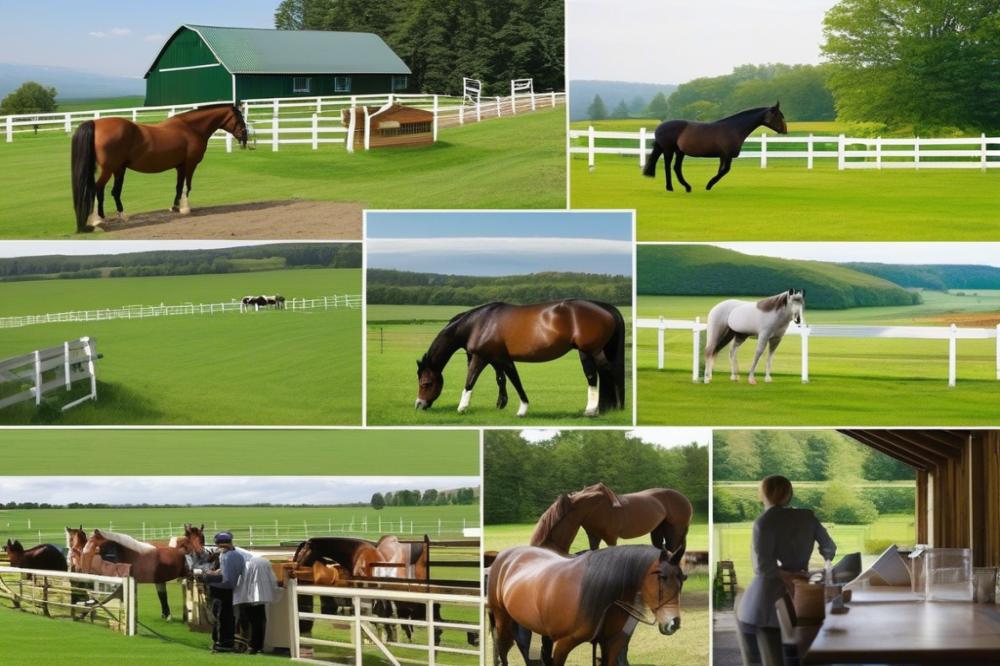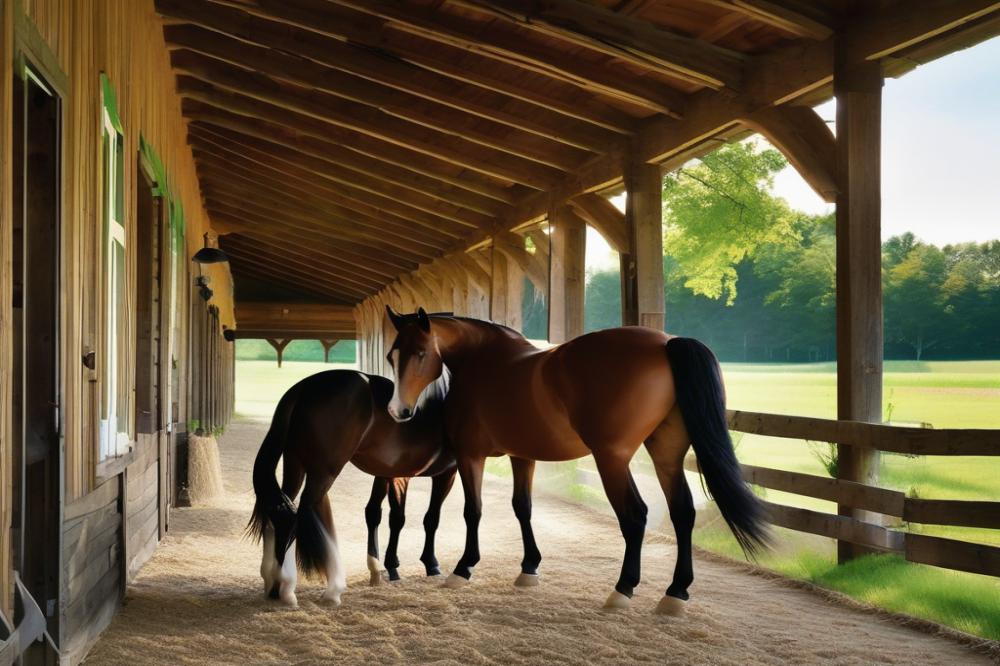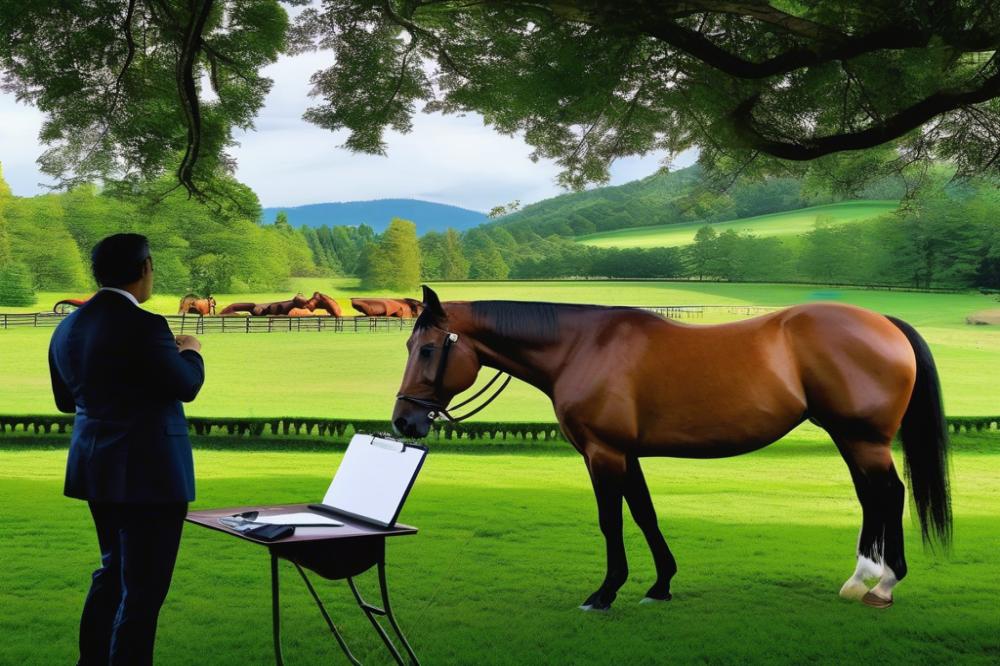Evaluation Techniques for Potential Breeding Stock
breeding stock evaluation is a critical process in the world of horse breeding. It helps breeders choose the best animals for reproduction. The significance lies in enhancing the quality of future generations. In breeding, both genetics and environment play key roles. Understanding these factors can lead to better decision-making.
Selecting the right animals requires careful consideration of various criteria. Breeders often look at traits such as conformation, temperament, and performance history. Phenotype assessment is a common practice. It involves examining physical characteristics that can provide insights into an animal’s potential. A horse’s height, build, and movement are all assessed during this process.
genetic assessment also holds great importance. Studying an animal’s lineage helps predict how its offspring may behave or perform. Identifying desirable traits can improve both physical and mental attributes in future generations. Careful genetic pairing can reduce the risk of inherited health issues, which is crucial for animal welfare.
Using effective evaluation techniques can significantly enhance breeding programs. These techniques assist in maximizing the benefits of livestock management. By analyzing both genetics and phenotype, breeders can make informed choices. This thoughtful approach not only improves the quality of the horses but also promotes better practices within the industry.
In conclusion, evaluating potential breeding stock is an essential task. It combines science and observation to create better breeding outcomes. With the right assessment methods, breeders can achieve great results, ensuring healthier and more capable horses in the future.
Understanding animal genetics

animal genetics is the study of how traits are passed from one generation to the next. This field is crucial for anyone involved in breeding stock evaluation, as it helps breeders understand which traits may be inherited. Genetic traits can influence everything from physical appearance to performance capabilities in horses.
One key concept in animal genetics is heritability. This term describes the proportion of observable differences in a trait that can be attributed to genetic factors rather than environmental influences. For example, if a horse shows exceptional speed, determining how much of that speed is due to its genetics is essential. High heritability means that genetics plays a significant role in that trait.
Another important principle is genetic diversity. Having a wide range of genetic material in a breeding population helps maintain health and vigor. When horses are closely related, there is a risk of inbreeding, which can lead to certain health issues and lower performance. Therefore, breeders often look for diverse genetic backgrounds when selecting potential breeding stock.
Genetic factors can greatly impact various traits and performance in horses. Physical characteristics such as coat color, size, and conformation are all influenced by genetics. Performance traits like speed, stamina, and temperament are also shaped by inherited factors. By understanding these genetic influences, breeders can make informed decisions about which horses to pair for breeding.
Mating decisions should hinge on a solid knowledge of genetics. If breeders want to enhance specific traits, they must consider the genetic backgrounds of the horses involved. This information allows them to predict the likelihood of successful outcomes in future offspring. Thus, analyzing pedigrees becomes an essential task in evaluating potential breeding stock.
In summary, grasping the fundamentals of animal genetics is necessary for effective breeding practices. Heritability and genetic diversity play pivotal roles in determining the strengths and weaknesses of potential breeding stock. Through careful evaluation, breeders can improve horse traits and overall performance, ensuring a brighter future for their breeding programs.
Selection Criteria for Breeding Stock

Evaluating potential breeding stock involves several important criteria. These factors help determine which animals will contribute positively to future generations. Three main areas require attention during this process: physical conformation, reproductive traits, and temperament.
Physical Conformation
Physical conformation refers to the overall structure and shape of an animal. Animals should possess a strong body with good muscle tone. Soundness in joints and limbs is crucial. A well-balanced body assists in movement and productivity. Special attention should be given to overall health, coat quality, and dental health. Ideal body conditions vary by species, so understanding breed standards is essential. Animals with desirable physical traits have better chances for success in breeding programs.
Reproductive Traits
Reproductive traits greatly influence the effectiveness of breeding stock. Fertility rates play a key role in successful breeding. It is important to consider both female and male genetics. A history of healthy offspring is a strong indicator of good breeders. Animals that experience fewer complications during birthing are preferable. Regular health screenings should assess reproductive systems. A focus on reproductive efficiency will maximize productivity in any breeding program.
Temperament
Temperament is another vital criterion in evaluating breeding stock. Animals should display calm and manageable behavior. A stable temperament contributes to easier handling and overall farm safety. Stressful environments can disrupt breeding efforts and affect offspring development. Animals that exhibit friendly or curious behavior often adapt better to human interaction. Selecting for good temperament leads to more productive and harmonious relationships between humans and animals.
Aligning selection criteria with Breeding Goals
Aligning selection criteria with breeding goals is crucial. Clear objectives help guide the evaluation process. Understanding desired traits allows for more effective decision-making. For instance, a focus on milk production in dairy cattle may prioritize reproductive traits over others. On the other hand, prioritizing growth rates in livestock might require different considerations. Every breeding program should reflect the specific needs of the operation. This alignment will ultimately yield better outcomes and more robust animals in future generations.
Phenotype Assessment Techniques

Evaluating the phenotype of horses involves various techniques. These methods help breeders identify desirable traits. Visual inspection stands as one of the most fundamental approaches. Observing a horse’s conformation, coat color, and overall health provides immediate information. Breeders often assess the animal’s structure and movement during this process. This observation can reveal strengths and weaknesses.
In addition to visual checks, scoring systems offer a more structured method for evaluation. Scoring takes place on a standardized scale. For instance, many breeders use a point system for key attributes. Traits such as musculature, bone structure, and temperament can be rated numerically. This technique helps in comparing multiple horses systematically. It also aids in documenting progress over time.
Measurement methods further contribute to understanding horse phenotypes. Gathering concrete data about height, weight, and limb length plays an important role. Measuring girth can indicate fitness and strength. Additionally, taking heart girth measurements may provide insights into respiratory capacity. Such data is crucial when selecting horses for competitive purposes.
Role of phenotype assessment cannot be overstated. It plays a vital part in identifying horses with potential for breeding. Desirable traits can include agility, speed, and stamina. Evaluating performance characteristics remains essential for identifying the best breeding stock. Each technique, whether it is visual inspection, scoring, or measuring, brings unique insights. Together, they create a comprehensive picture of the horse’s capabilities and traits.
Performance Testing Methods
Performance testing serves as a crucial technique for evaluating potential breeding stock. Various types of performance tests are available, each measuring different physical attributes. These tests can include speed, endurance, and agility. Information gathered from them can guide breeding decisions effectively.
Speed is one of the most common performance tests. Animals are usually timed over a set distance to assess their quickness. This measurement can reveal which individuals possess the traits desired for racing or other competitive events. By identifying the fastest animals, breeders can select those with superior genetics for future breeding.
Endurance tests examine how long an animal can perform a sustained activity. This typically involves longer distances, assessing stamina and recovery. Breeding stock that demonstrates high endurance can pass these desirable traits to offspring, making them suitable for work or sports.
Agility is another important aspect. Tests for agility usually involve obstacles and challenges to see how well an animal can maneuver. Animals that excel in agility often display traits like coordination and balance. Such features can be beneficial in various competitive environments.
The collected performance data can greatly influence breeding programs. By analyzing this information, breeders can make more informed decisions. Selecting individuals that meet performance benchmarks leads to improved traits in future generations. This process can be both strategic and rewarding.
Introducing these testing methods into a breeding program helps in maintaining a diverse gene pool. Variation in performance can indicate unique strengths among animals. In turn, these strengths can enhance overall stock quality. The right combination of traits leads to a more effective breeding strategy.
Regular testing provides consistency in evaluating breeding stock. As a result, breeders can track improvement over time. Adjustments can be made based on performance trends, allowing programs to stay relevant. Thus, performance testing is not just about individual testing; it shapes the future of the breed.
Genetic Analysis and Trait Evaluation
Genetic analysis is a crucial part of assessing potential breeding stock. Different methods help breeders identify favorable traits that can be passed on to future generations. DNA testing has gained popularity in this area. It allows breeders to look closely at the genetic makeup of an animal. Specific markers indicate whether certain traits are present or absent.
In addition, genomic selection plays a large role in today’s breeding programs. This technique uses information from the entire genome to predict how an animal will perform based on its genetic profile. By applying this technology, breeders can select individuals with the best chances of success. They look for traits such as growth rate, disease resistance, and reproductive capabilities.
Trait analysis is also essential. Breeders consider both heritability and genetic potential when selecting animals. Heritability measures how much of a trait’s variation is due to genetics, rather than environment. High heritability means traits are likely to be passed down reliably. Genetic potential refers to the ability of an individual to express a certain trait under ideal conditions.
Combining these strategies allows breeders to make informed decisions. With the aid of modern tools and techniques, they can enhance their stock’s genetic value. As a result, the overall quality of the population improves. A strong focus on genetic factors ultimately leads to better breeding outcomes.
Breeders need to stay updated on advancements in genetic testing. The science surrounding DNA testing is continually evolving. Understanding these developments is vital for making the best choices in breeding stock assessment.
Integrating Evaluation Techniques in Breeding Programs
Evaluating potential breeding stock requires a thoughtful approach. Various techniques must be blended into an effective breeding program. These methods can include phenotypic observation, genetic testing, and performance records. Each technique offers valuable insights. Therefore, combining them creates a more robust selection strategy.
Ongoing assessment is vital in any breeding initiative. Breeders should regularly evaluate the effectiveness of their methods. Adapting strategies based on new data can lead to improved outcomes. Flexibility in approaches allows for addressing unexpected challenges. Without this adaptability, programs may stagnate or become less effective over time.
Besides genetic factors, environmental influences also play a role. Understanding how different conditions affect breeding stock is essential. This knowledge can guide better decisions in selection. It can also lead to healthier and superior offspring. Hence, environmental assessments should be part of the evaluation mix.
Communication among team members fosters success in breeding programs. Sharing observations and data creates a comprehensive view of stock performance. When everyone is involved, decisions can be more informed and precise. Collaboration leads to a united front in pursuing program goals.
It is also important to monitor the progress of selected stock continuously. Measuring outcomes over time helps identify trends. Breeders can then spot which traits are consistently successful. This long-term view will help fine-tune the breeding process and objectives.
Evaluating breeding stock is not a one-time event. Rather, it is an ongoing cycle of assessment and action. As new techniques emerge, integrating these innovations can provide a competitive edge. Breeders should stay informed about advancements in the field. Innovation can significantly impact breeding efficiency and effectiveness.
Emphasizing both quantitative and qualitative data will benefit programs. Objective data from genetic tests should inform decisions, but subjective evaluations also matter. The ability to assess aesthetics and temperament can be crucial. Some traits may not appear in genetic data but are vital for animal welfare or market preference.
Overall, combining various evaluation techniques creates a comprehensive breeding program. Continuous learning and agility are essential for success. Adjustments based on ongoing reviews will maximize potential growth. This dynamic structure ensures better outcomes in breeding practices.
Final Thoughts on Evaluating Breeding Stock
When evaluating potential breeding stock, a comprehensive approach is essential. Combining various techniques is key to making informed decisions. Animal genetics serves as the foundation, guiding breeders toward animals with desirable traits. Selection criteria need to be clearly defined to help assess the qualities most important for breeding goals.
It is important to consider phenotype assessment when evaluating animals. Observing physical attributes and behavior offers insights into their potential. Performance testing also plays a vital role. This method allows breeders to see how animals perform under specific conditions. Results from these tests provide valuable information that can’t be obtained through appearance alone.
The impact of using a well-rounded evaluation system can transform equine breeds and livestock management practices. Breeders can make choices that not only enhance individual animals but also contribute to the health and productivity of entire breeds. Increased productivity leads to better outcomes for farmers and can even improve sustainability in the long run.
In summary, a thorough evaluation combining genetics, clear selection criteria, phenotype observations, and performance tests is crucial. This multifaceted approach will ultimately shape the future of breeding, yielding stronger, healthier, and more productive animals.



